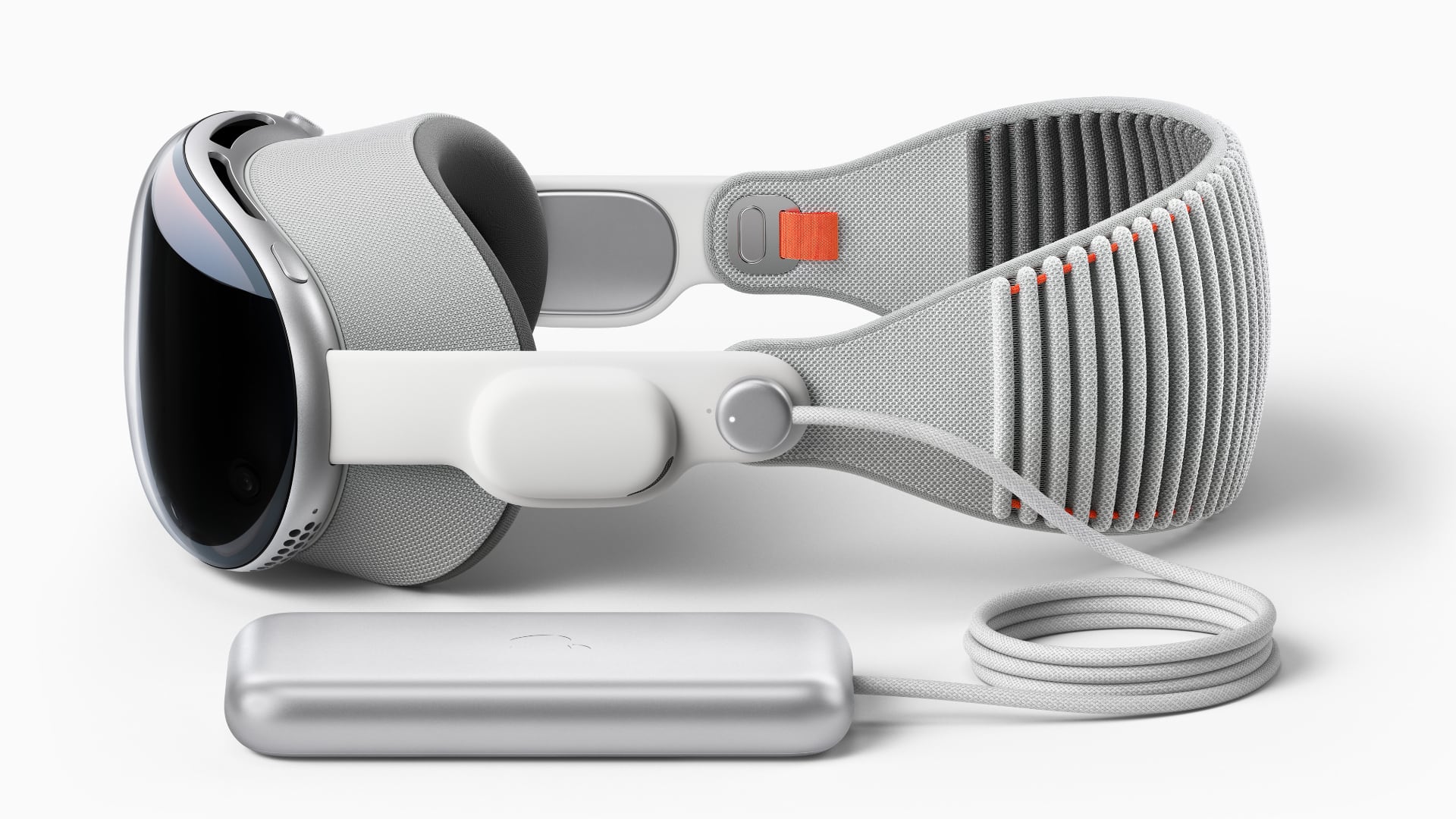A cheaper Apple headset might launch at the end of 2025. It’s speculated to use lower-quality parts and kill features like 3D camera to keep the price down.

- With Apple’s $3,500 Vision Pro headset now official, the company is already working on a cheaper model to get more people to use its spatial computer.
- Apple could create a more affordable headset by swapping sophisticated parts like 4K micro-OLED displays and the M2 chip for cheaper versions. However, don’t expect it to undercut its top rival, Meta’s Quest 2, which retails for $500.
- When the Vision Pro price was announced during the WWDC23 keynote, “loud gasps” could be heard among the crowd at the Apple Park campus.
How Apple could create more affordable headsets
Mark Gurman writes in the latest edition of his Power On newsletter for Bloomberg that Apple is selling the Vision Pro at or near the cost, with the three priciest components being its sophisticated displays, chips and sensors.
To create a regular, non-Pro Vision, Apple could use cheaper displays, slower chips and fewer cameras, which would inevitably impact the user experience. However, that could be Apple’s only choice given today’s nascent state of technology.
Meet Apple Vision
A cheaper Apple headset analyst Ming-Chi Kuo predicted would drop by the end of 2025 could use these tricks to lower the asking price to bearable levels.
- Slower chips. An iPhone-class processor or an older Mac chip like the M1 could be used instead of the current Mac-level M2 chip.
- Lower-quality screens. Micro-OLED displays in the Vision Pro are built by Sony, but Apple could source lower-quality ones from other suppliers.
- AirPods for audio. Apple could require AirPods for spatial audio instead of equipping the Vision Pro’s strap with dual-driver audio pods for each ear.
- Simpler headband. A simpler headband design with fewer parts could help decrease the bill of materials.
- Physical IPD. The interpupillary distance (IPD) defines the distance between your eyes. Each individual has a different IPD. On the Vision Pro, it’s adjusted by turning a dial on the headset’s flexible knitted frame. Gurman says Apple could move to a physical versus automatic IPD for a future Apple Vision.
- Fewer cameras. Some of the Vision Pro’s external cameras are used for capturing 3D images and videos. Apple could remove the 3D camera feature to create a headset with fewer cameras.
But what about EyeSight, that bizarre outward-facing screen that renders your digital eyes to the outside world? Surely Apple could kill it and save some money in the process, right? It would even help make the next headset less creepy.
There are a few areas I believe Apple will not compromise on in a cheaper Apple Vision. The external screen, known as EyeSight, to show a wearer’s eyes, as well as the eye and hand-tracking system, are as core to the Apple Vision as a touchscreen is to an iPhone. I would expect a cheaper model to keep those features.
EyeSight could be why Apple has yet to share any press photos showing Tim Cook or any of its executives actually wearing the headset.
Two-tier approach
So, that’s how Apple might bring out a more affordable headset. Gurman says there’s also a more powerful Vision Pro successor with a faster chip in the works.
But, for now, Apple has to hope that the high price of the Vision Pro doesn’t drive people away from the category and that there will be enough consumers ready to line up for a cheaper version into 2026.
Normals will be eyeing a cheaper variant of the Vision Pro, not its beefed-up second-generation version. $3500 is a big ask, and Apple knows it—even Tim Cook is unsure whether the average consumer could afford Vision Pro.
Responding to a question during an interview with “Good Morning America” co-host Robin Roberts about the headset’s affordability, Cook said, “I think people will make different choices depending upon their current financial situation and so forth.”